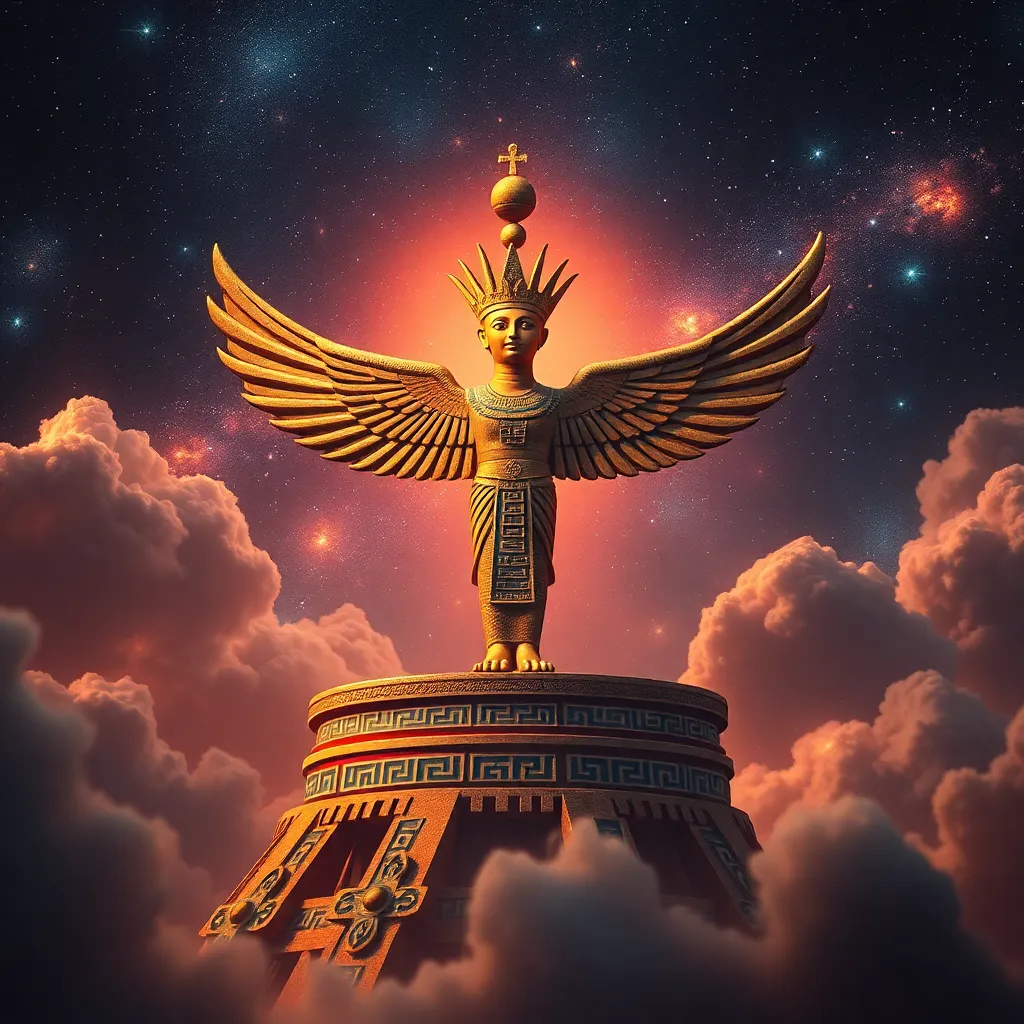The Cosmic Order: Ma’at and the Balance of the Universe
I. Introduction to Ma’at
Ma’at is a central concept in ancient Egyptian culture, representing the ideal of truth, justice, and cosmic order. It embodies the belief that the universe is governed by a fundamental order that must be maintained for the harmony of existence. Historically, Ma’at was not just a philosophical idea but a guiding principle for the social, political, and spiritual life of the ancient Egyptians.
In ancient Egypt, Ma’at was personified as a goddess, depicted as a woman with an ostrich feather on her head, symbolizing truth and balance. The significance of Ma’at was deeply rooted in the belief that maintaining this cosmic order was essential for the well-being of both the individual and the community. The ancient Egyptians understood that their actions had repercussions on a universal scale, making the principles of Ma’at crucial for their society.
II. The Principles of Ma’at
The principles of Ma’at can be broken down into key tenets that include:
- Truth: The unwavering commitment to honesty and integrity.
- Justice: Ensuring fairness and equality in all dealings.
- Harmony: Striving for balance in personal and social relationships.
The feather of Ma’at serves as a powerful symbol of these principles. In the afterlife, the deceased’s heart was weighed against this feather in the Hall of Judgment to determine their fate. If the heart was lighter than the feather, it indicated a life lived in accordance with Ma’at, granting the individual access to the eternal afterlife.
Furthermore, Ma’at was intrinsically linked to the moral ethics of society. Ancient Egyptians believed that living in accordance with Ma’at was essential for personal integrity and social cohesion.
III. Ma’at in Ancient Egyptian Cosmology
In ancient Egyptian cosmology, Ma’at played a pivotal role in the creation myth. The universe was born from chaos, and it was through the establishment of Ma’at that order emerged. The gods and goddesses, such as Osiris, Isis, and Horus, were tasked with upholding this cosmic order, ensuring that Ma’at reigned supreme over the land.
The Duat, or the underworld, was also significant in relation to Ma’at. It was believed that upon death, the souls of the deceased underwent judgment in the Hall of Ma’at. This judgment, presided over by Osiris and the goddess Ma’at, determined whether the individual would enjoy eternal life or face annihilation.
IV. The Practice of Ma’at in Daily Life
Ma’at was not only a concept for the afterlife; it permeated the daily lives of ancient Egyptians. Here are a few ways in which they incorporated Ma’at into their everyday routines:
- Social Interactions: Egyptians practiced honesty and fairness in their dealings with others, reflecting the principles of Ma’at.
- Governance: Pharaohs were seen as the embodiment of Ma’at, ruling justly and ensuring that laws reflected the cosmic order.
- Religious Rituals: Daily rituals and ceremonies were performed to honor Ma’at, reinforcing its values within the community.
These practices ensured that the society remained aligned with the principles of Ma’at, fostering a stable and harmonious environment.
V. The Balance of the Universe: Ma’at and Natural Law
Ma’at is deeply intertwined with the natural world. The ancient Egyptians observed how the cycles of nature mirrored the principles of Ma’at, emphasizing the interconnectedness of all things. Examples include:
- The flooding of the Nile, which brought fertility to the land and was seen as a manifestation of Ma’at.
- The cyclical nature of day and night, representing the balance and order inherent in the universe.
- The seasonal changes that dictated agricultural practices, reflecting the reliance on Ma’at for sustenance.
Disrupting this cosmic balance, whether through unethical behavior or environmental exploitation, was believed to bring chaos and misfortune. The ancient Egyptians understood that harmony with nature was essential to uphold Ma’at.
VI. Ma’at and Modern Interpretations
In contemporary society, the relevance of Ma’at extends beyond its historical context. Philosophers and ethicists draw inspiration from its principles to address modern challenges. Some modern movements influenced by Ma’at include:
- Environmental Justice: Advocating for a balanced relationship between humanity and nature, echoing the principles of Ma’at.
- Social Justice: Promoting equality and fairness in society, reminiscent of the values embodied by Ma’at.
- Ethical Governance: Encouraging transparency and integrity in leadership, reflecting the ideals of Ma’at.
These interpretations emphasize the importance of striving for balance and justice in our lives today.
VII. Challenges to Ma’at Throughout History
Throughout history, various events threatened the balance of Ma’at. Notable challenges include:
- Periods of political upheaval, where rulers failed to uphold justice and truth.
- Social strife and inequality that disrupted the harmony of society.
- Invasions and foreign rule that undermined the principles of Ma’at.
The decline of Ma’at during these tumultuous times serves as a reminder of the fragility of cosmic order. Lessons learned from these challenges highlight the need for vigilance in maintaining balance and harmony in society.
VIII. Conclusion: The Enduring Legacy of Ma’at
Ma’at remains a significant concept, both in ancient and modern contexts. Its principles of truth, justice, and harmony are timeless ideals that resonate with the human experience. As we navigate the complexities of contemporary life, striving for balance and ethical integrity is more crucial than ever.
Embracing the principles of Ma’at can guide individuals and communities toward a sustainable and equitable future. In a world where chaos often threatens to disrupt harmony, the enduring legacy of Ma’at serves as a beacon of hope and a call to action for all of us.




